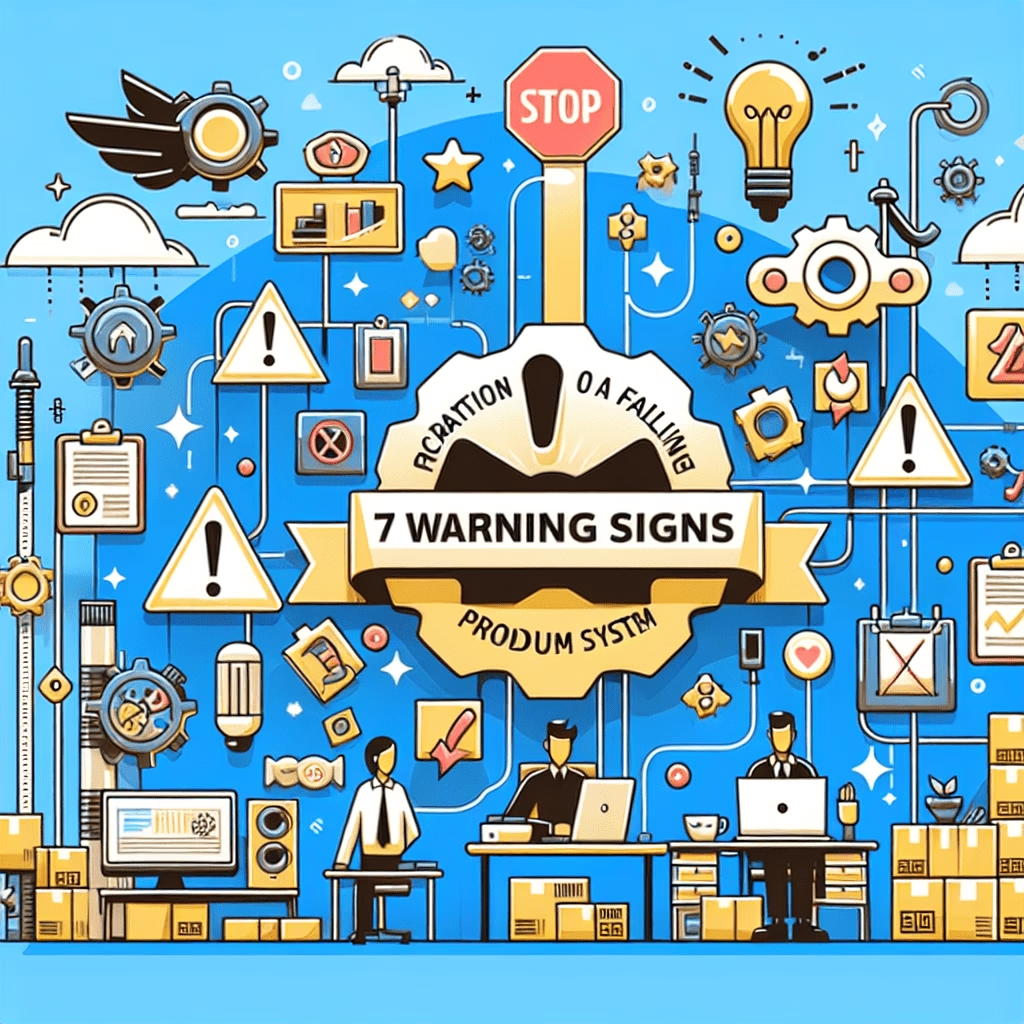In today’s competitive market, understanding the warning signs of a failing product system can be the difference between success and failure. Product managers and stakeholders often face challenges that can derail even the most promising products. In this comprehensive guide, we delve into the seven key indicators of a struggling product system, drawing insights from industry experts to help you navigate these treacherous waters effectively.
1. Solution-First Thinking: The Pitfalls of Jumping to Conclusions
One of the most common traps in product management is the tendency to jump straight into solutions without fully understanding the problem. This “solution-first thinking” can lead to misguided efforts and wasted resources. A case study from a leading tech company reveals how premature assumptions led to the development of a feature that customers did not need, resulting in significant financial losses.
To combat this, Scott Williamson, former Chief Product Officer at GitLab, recommends conducting qualitative interviews to challenge assumptions. By identifying patterns in user feedback, you can ensure that your team is investing in the right initiatives.
- Conduct in-depth interviews with target users.
- Analyze feedback for emerging patterns.
- Adjust your strategy based on validated insights.
2. Planning Dictated by Hierarchies: The Need for Flexibility
When planning is dictated from the top down, it often stifles innovation and scalability. A rigid planning process can prevent teams from adapting to changing market conditions. An external article on Forbes highlights how a Fortune 500 company restructured its planning process to allow for more flexibility, leading to increased market share.
Scott Williamson advises using an Opportunity Canvas for every new idea. This tool helps frame and assess initiatives beyond hierarchical constraints.
- Create a clear Opportunity Canvas for each project.
- Encourage collaborative input from all team levels.
- Regularly revisit and adjust plans based on new data.
3. Unclear Product Direction: Aligning Strategy and Execution
Unclear product direction often leads to confusion and misalignment across teams. This can negatively impact adoption rates and market performance. A notable example is a startup that launched a product without a clear strategy, resulting in poor user feedback and declining sales.
To address this, Scott recommends creating an Amazon 6-pager. This concise document outlines product strategy, challenges, and potential solutions, ensuring that everyone is aligned and informed.
- Develop an Amazon 6-pager for each product line.
- Distribute it across all relevant teams.
- Conduct regular strategy reviews to maintain alignment.
4. Undefined Team Ownership: A Recipe for Chaos
When team ownership is unclear, projects often overlap, leading to missed deadlines and confusion. A case study from a major e-commerce platform illustrates how lack of defined roles caused redundant efforts and increased operational costs.
Scott suggests defining a charter to delineate the boundaries of each team’s responsibilities. This ensures that everyone knows their roles and can work more efficiently.
- Create a detailed team charter with specific roles and responsibilities.
- Regularly update the charter to reflect any changes.
- Hold team meetings to discuss and clarify ownership issues.
5. Unclear Metrics for Success: Measuring What Matters
Without clear metrics, it is difficult to gauge progress and success. A lack of measurable outcomes can lead to a false sense of achievement. A study by Harvard Business Review found that companies with defined KPIs are more likely to achieve their strategic goals.
Scott advises adopting Key Performance Indicators (KPIs) tailored to your product’s goals and objectives. This allows for precise measurement and informed decision-making.
- Identify KPIs relevant to your product’s success.
- Regularly track and review these metrics.
- Use insights from KPIs to guide strategic decisions.
6. Prioritization Overload: Avoiding the Pitfall of “Everything is Important”
When everything is a priority, nothing truly is. Continually adding priorities can create chaos and disrupt planning. A renowned consultancy firm shared how they streamlined their prioritization process to enhance productivity and team morale.
Scott recommends adopting Product Themes. These strategic groups of initiatives help maintain focus and prevent the dilution of effort across too many priorities.
- Define Product Themes that align with your strategic goals.
- Ensure all initiatives fit within these themes.
- Regularly evaluate and adjust themes based on business needs.
7. Neglecting Career Development: The Hidden Cost of Attrition
A lack of focus on career development can lead to high attrition rates, losing valuable talent and institutional knowledge. An internal survey from a leading tech company revealed that career development opportunities were directly linked to employee retention.
If leadership does not provide a clear path for progression, Scott recommends creating your own career development document. This proactive approach empowers employees to take charge of their growth.
- Outline personal career goals and development plans.
- Seek mentorship and feedback from peers and leaders.
- Continuously update your development plan as you progress.
Conclusion: Navigating Product System Challenges
Recognizing these warning signs is crucial for any product manager aiming to build a successful product system. By addressing issues like solution-first thinking, dictated planning, and unclear metrics, you can foster a more efficient and effective product development environment.
For more insights into effective product management and design strategies, visit our Product and UX Design Blog. By staying informed and proactive, you can transform potential pitfalls into opportunities for growth and success.

